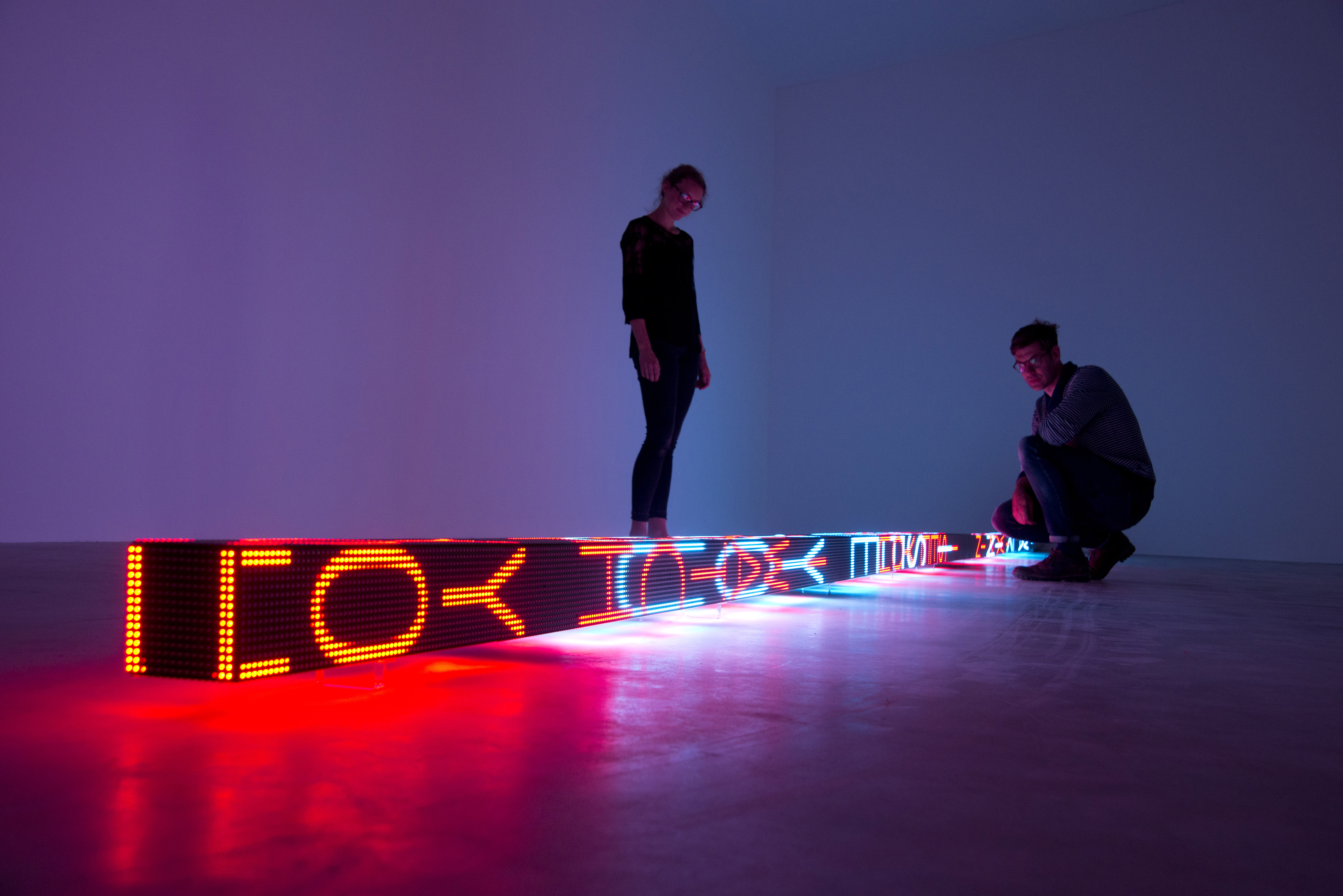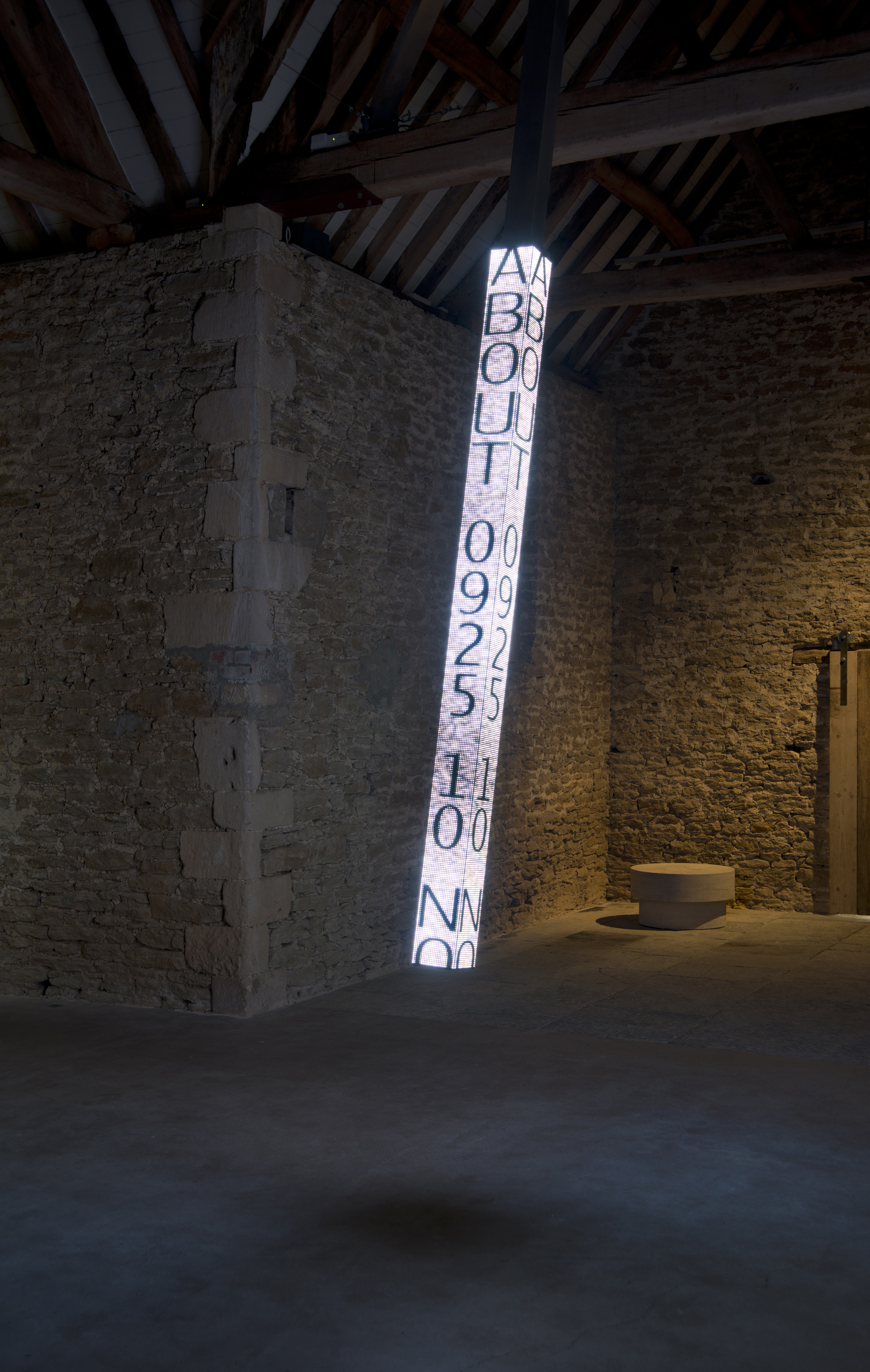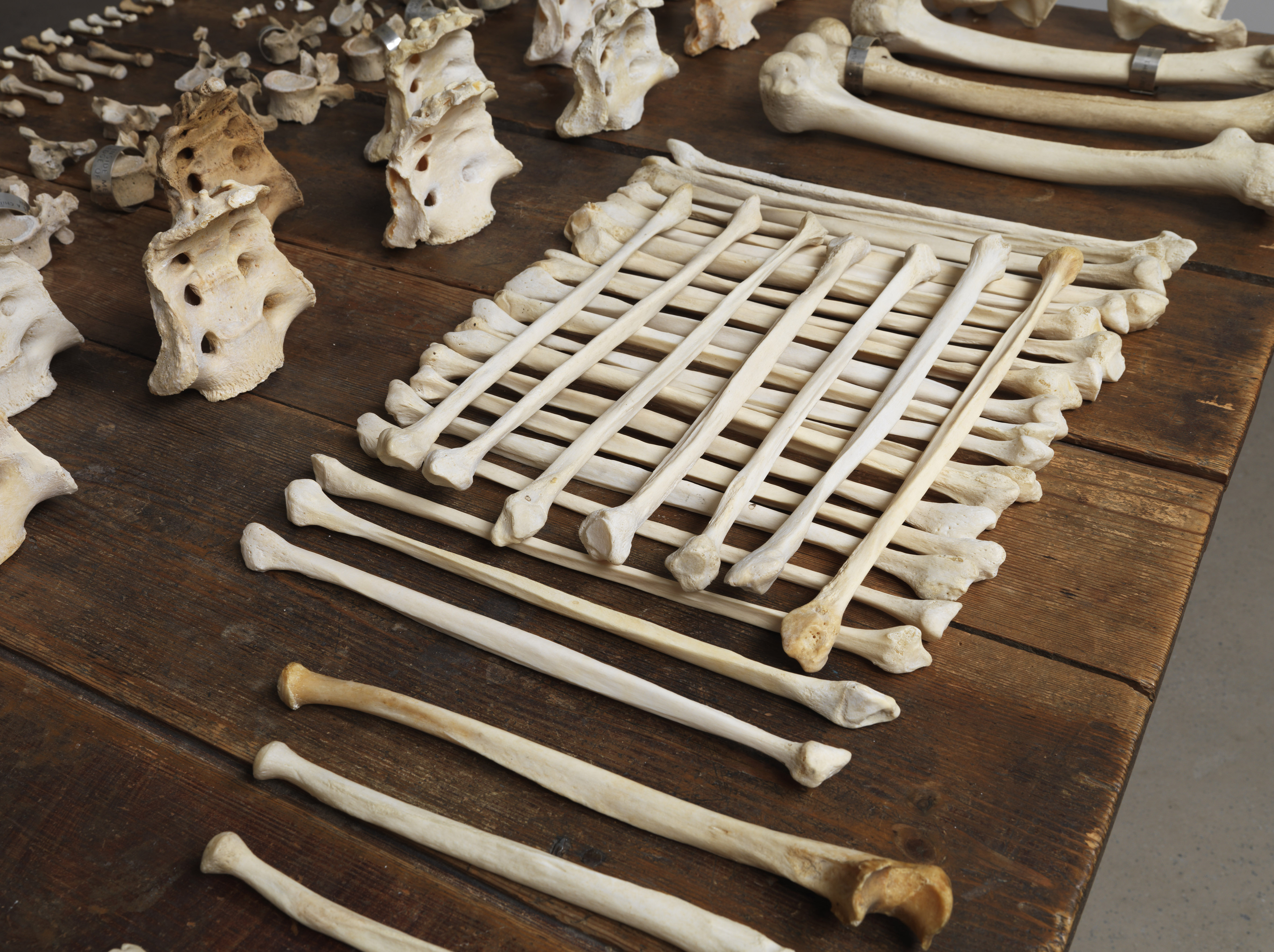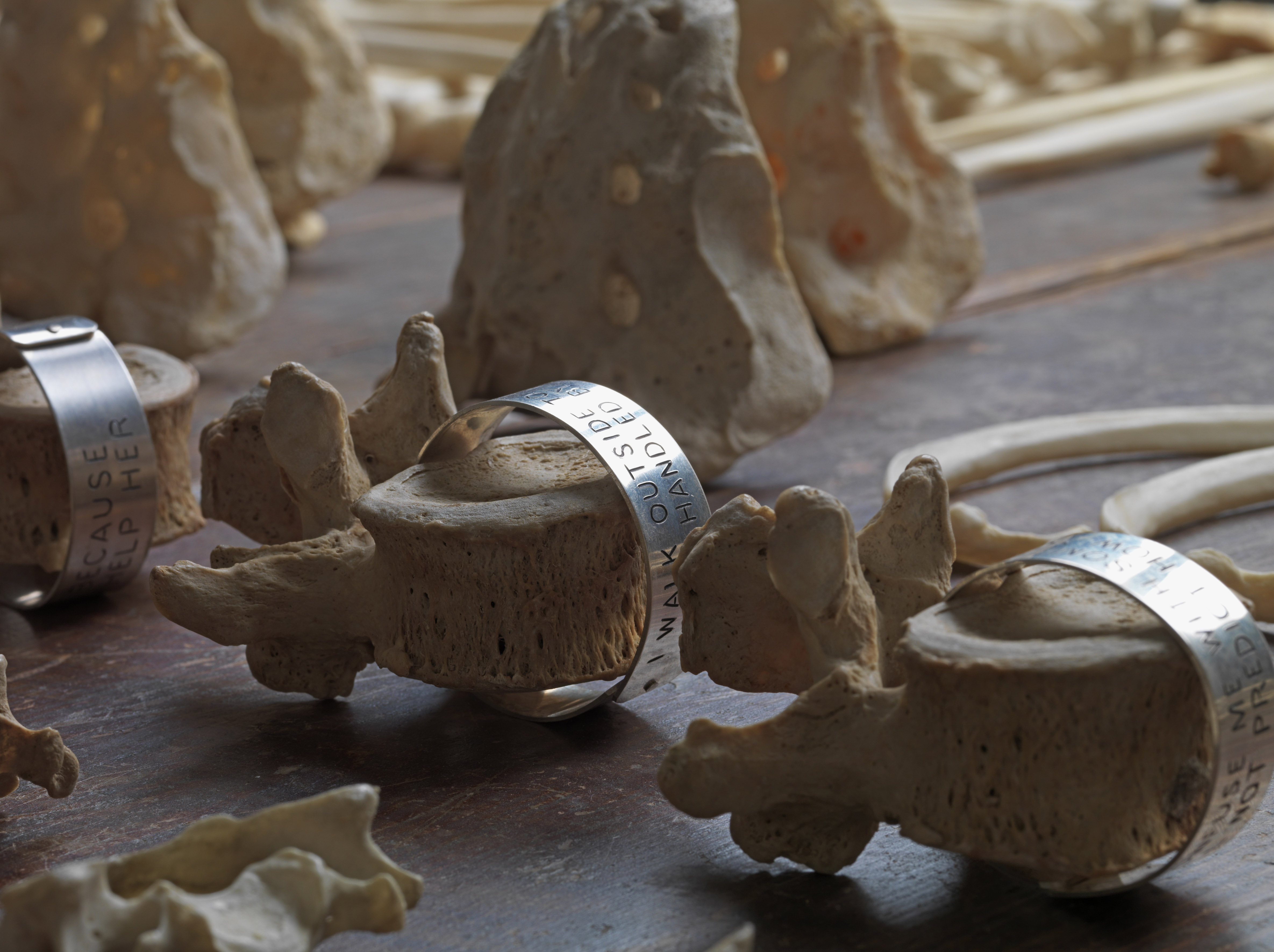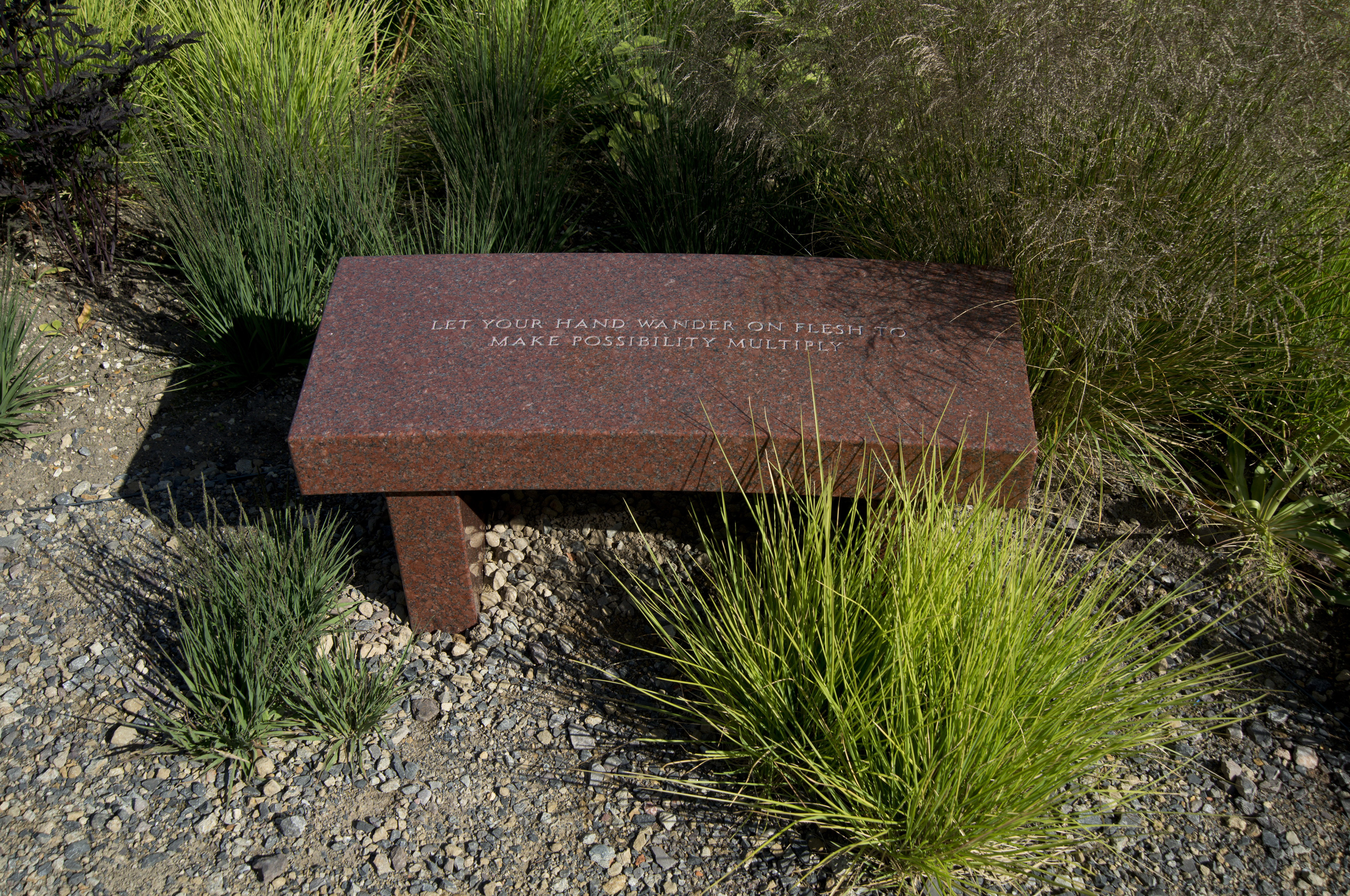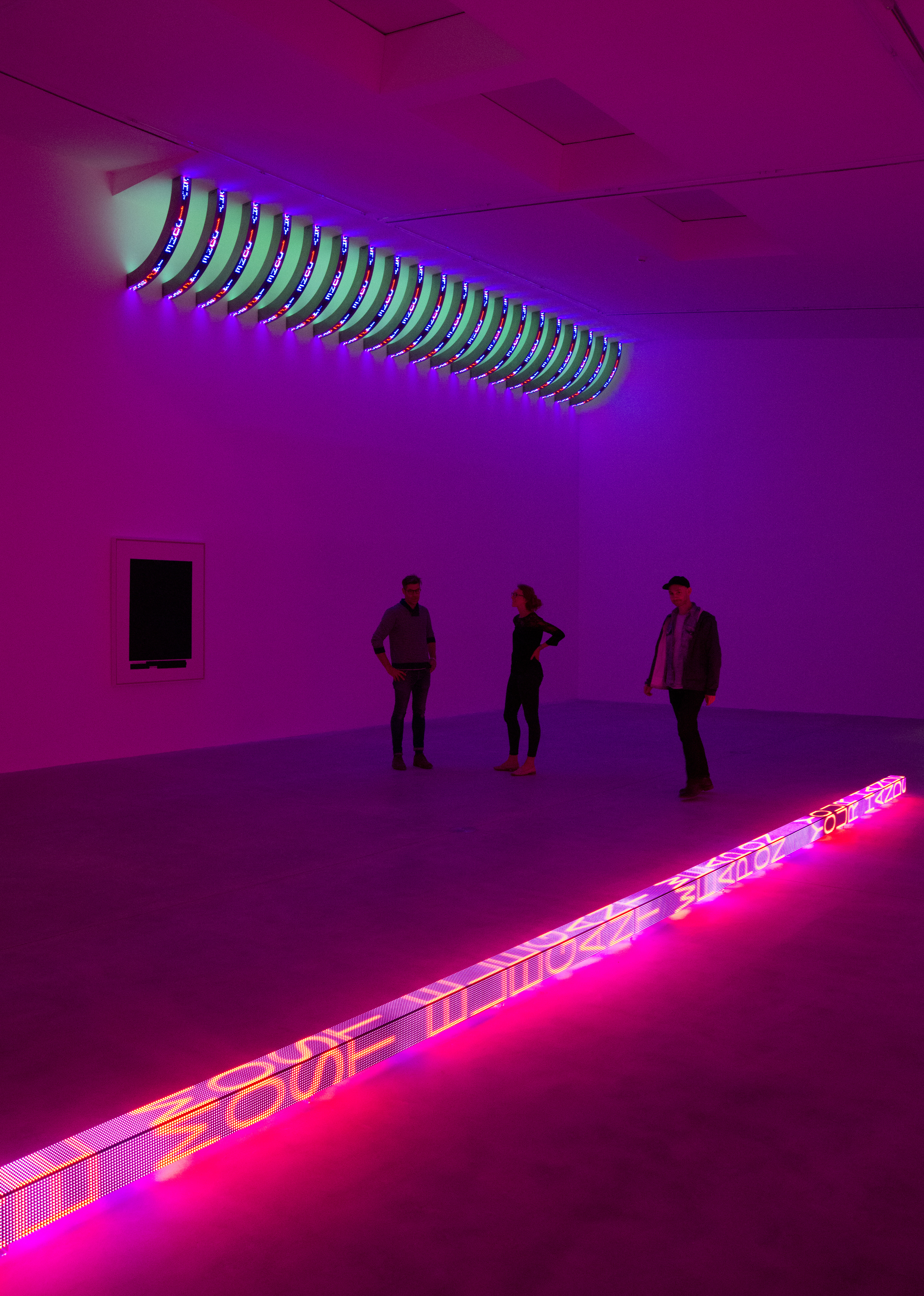Softer Targets places Jenny Holzer’s ferocious work in the idyllic English countryside. This weekend, in between admiring the blooms and bathing in the Somerset sun, Elephant observed the dark side of the US secret forces.
As incongruous as it sounds, in Hauser & Wirth’s Somerset farmhouses Softer Targets
forms a narrative that plays up to, rather than ignores, its surroundings. The gallery sits in a romantic spot — stoney 18th-century brick buildings surrounded by meadows of wild flowers — that does not immediately shout conceptual art. But perhaps this is the best setting for an artist who addresses systemic conspiracy and repressed human carnality in her work.
The sunny courtyard (also home to Louise Bourgeois’ looming spider sculpture, stomach loaded forebodingly with eggs) now houses a scattering of Holzer’s engraved granite benches. ‘Dear Jeremy, you will remain in our hearts forever’ these are not. Messages of lust, murder and animal drives are engraved in deep, spiky lettering. ‘You spit on them because the taste left on your teeth excites you,’ reads one; ’Let your hand wander on flesh to make possibility multiply,’ another.
As you head inside the Rhoades Gallery, Holzer’s light displays Purple and FLOOR flicker invitingly from the semi-darkness. The words all move slightly too fast to read and most viewers don’t bother to stop and read at all, snapping photographs of the (undeniably cool) light show and moving on. The words in this room are drawn from a mix of declassified documents about waterboarding and Holzer’s past collection of ‘truisms’. New LED work Move hangs alone from the rafters of the darkened Threshing Barn, its cold blue text slipping upwards as it swings, pendulum-like and robotic, in sensory response to the crowd surrounding it. It calls to mind many things: a crucifix hanging from the ceiling, a post for religious sacrifice, a dark space for hidden violence. The words here are taken from a declassified US document that details the death of Afghan soldier Jamal Naseer while in US custody.
The savagery of the exhibition swings in and out of time. Some works are immediate and desperate, while others are suggestive of a past and oddly empty violence. Rows of human bones in Lustmord Table
are arranged neatly in Hauser’s whitewashed Pigsty gallery to represent the relatively recent Yugoslav Wars (1991–2001). This feels reminiscent of an archaeology museum you might stumble across on a European family holiday, wafting past the remnants of old battles and bloodshed before heading outside for an ice cream and forgetting all about it.
The US artist’s work has previously seemed suited to harsh surroundings, fitting perfectly for example with Hayward’s brutalist blocks at Light Show. But here it takes on a new life and somehow wraps the viewer up in the guilt of the whole thing. So much of her work is about barbarism amidst the norm that isn’t called out. So of course this should reside in the home of normality and niceness, in Somerset’s countryside. And afterwards we enjoyed a lunch outside, before taking a drive in the sun and soon forgetting about the poor souls begging to be heard within the barns.
Softer Targets is showing at Hauser & Wirth, Somerset until 1 November.
All images: Installation view, ‘Jenny Holzer. Softer Targets’, Hauser & Wirth Somerset, 2015
© Jenny Holzer Courtesy Hauser & WirthPhoto: Ken Adlard
